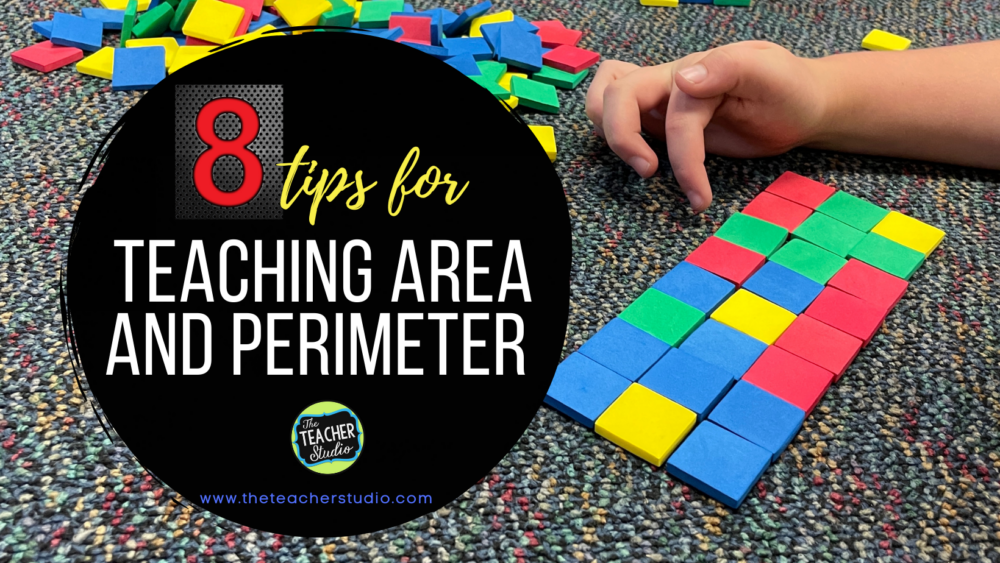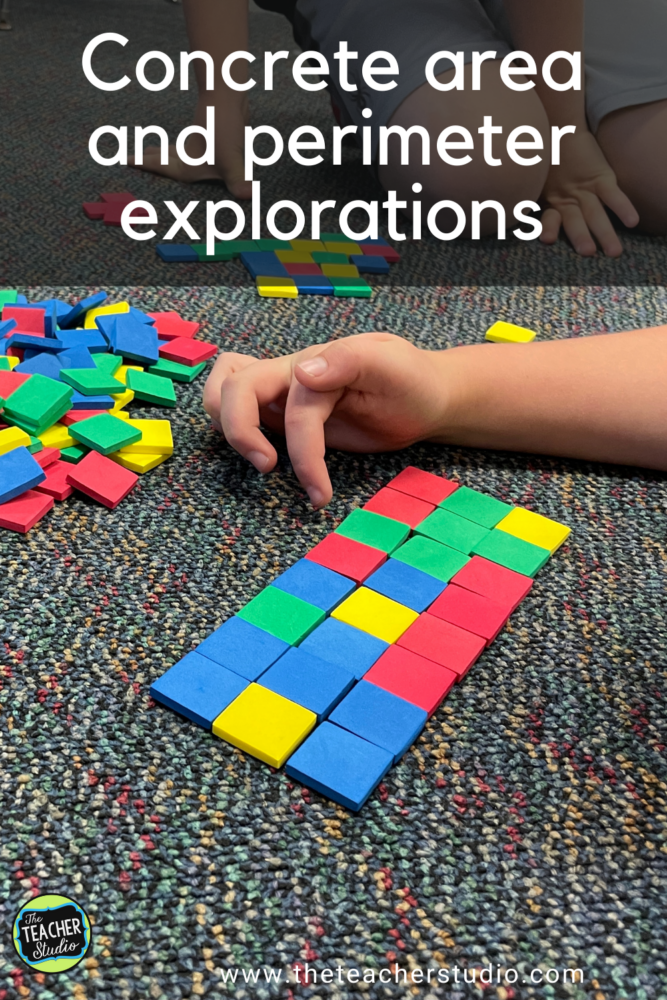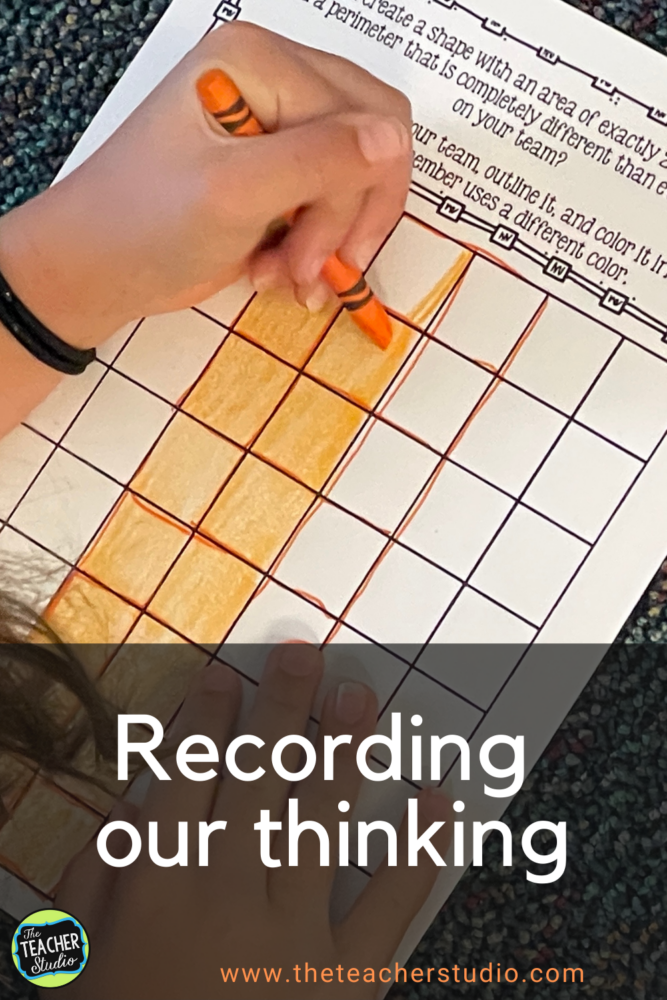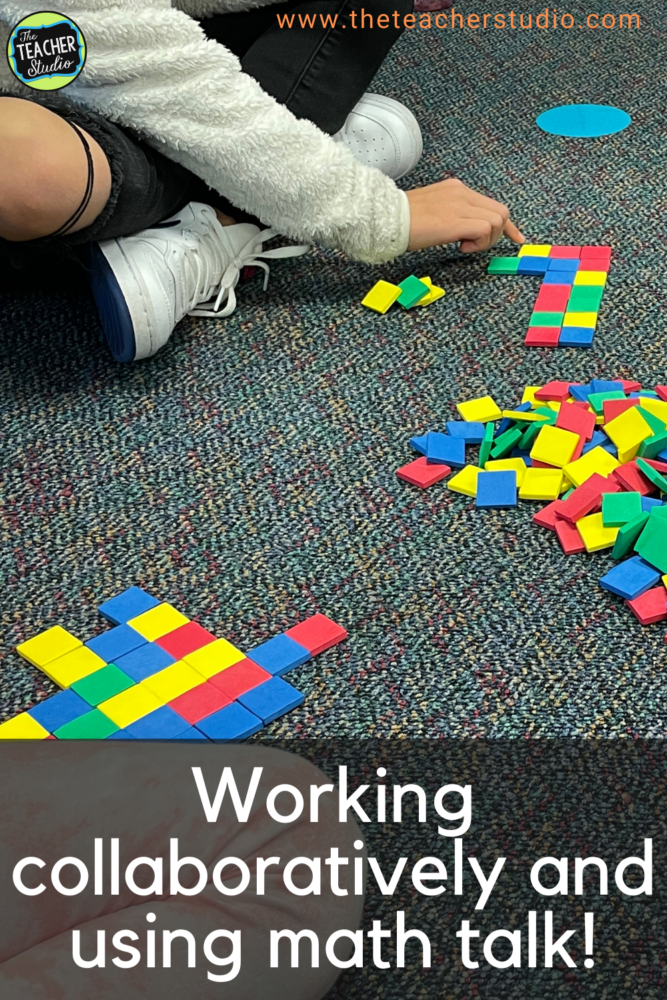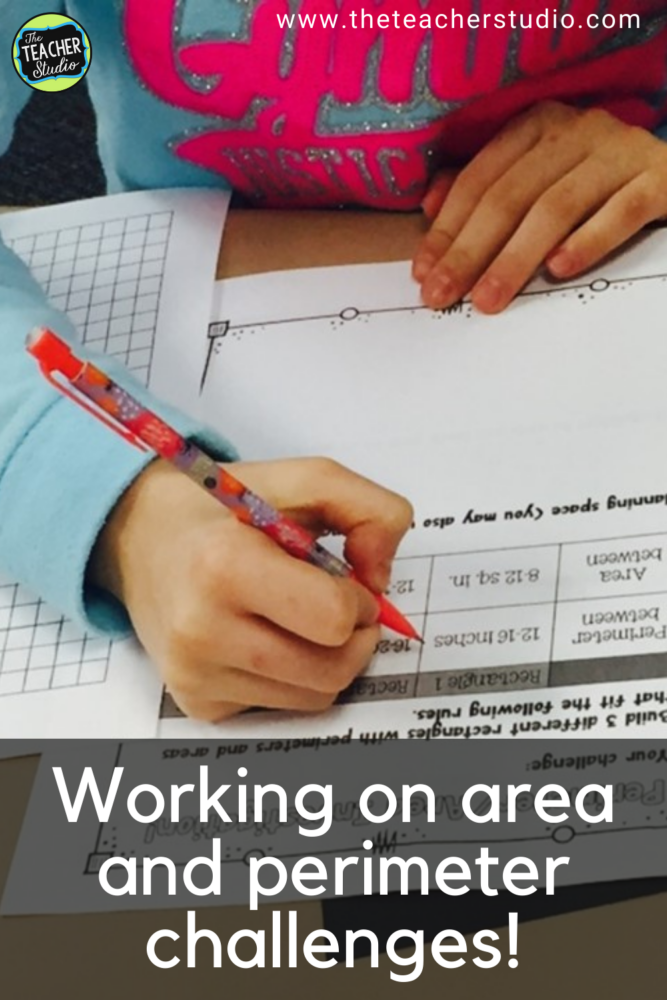So it’s time to be teaching area and perimeter, and even though it SEEMS like such a simple concept, students struggle with it every single year.
They start the process of learning these concepts in third grade where they build arrays and count squares to find both the perimeter and area, but every year they come in familiar with the terms but needing lots and lots of support.
I’ve learned a few things about teaching area and perimeter in my years, so I thought I’d share a few of them!
Teaching Area and Perimeter Lessons
- Build, build, build. Starting with the concrete is SO important. We often jump too quickly to pictures or even graph paper which are more abstract. My favorite tool for building? Quiet foam tiles! I would say these are one of my most valuable math manipulatives (CLICK HERE for an Amazon affiliate link if you want to see exactly which ones I use throughout the year.)
2. Model the “motion” of counting. When I model counting perimeter, I exaggerate my hand motion going AROUND the shape and for area, “coloring” the inside of the shape. We even use our hands in the air to make big rectangles and say “perimeter” and “area” with those motions.
3. Emphasize the difference between measuring length with units such as centimeters or inches and area with SQUARE units. Consider making an anchor chart with an inch drawn and labeled next to a square inch, a foot next to a square foot, and so on. Teach students how to label their work correctly (Attends to Precision standard).
4. Provide a ton of collaborative experiences The more students explain their thinking, self-correct misconceptions, and hear other ideas–the more solid their understanding. Not to mention–it makes it more fun as well!
Slow Down Your Teaching
5. Don’t try to rush the process. It seems efficient to teach the formulas for area and perimeter right away because the math isn’t that hard. Instead, use a more constructivist approach. Through the building of arrays and doing other explorations, students can derive the formulas on their own as they look for shortcuts. If they DO NOT start to notice these, we can gently guide them.
How? As we record our thinking in sketches, we can start to “notice” that both the lengths of the rectangle are the same and both the widths. We can ask the students to help us add those up without counting. Do we notice that we can add the two lengths together and the two widths and put it together? Show them how we can record that as L + L + W + W = P or even 2L + 2W = P.
Did anyone notice that we could add a length and a width together to find half the perimeter–and then double it? We can write that as 2 x (L + W) = P. By tying the formula to real “work”, students develop a deeper understanding. The same will be true for the area formula.
6. Find ways to explore the concept in more complex ways to push student thinking and identify misconceptions. Finding the area of irregular shapes, solving word problems, and asking questions in more open-ended ways (instead of “What is the area of a rectangle with a length of 12 feet and a width of 3 feet, ask “What are all the possible dimensions of a rectangle with an area of 36 square feet?”
Teaching Area and Perimeter Tricks? Sometimes!
7. Let’s face it. “Tricks” sometimes work. You have maybe seen photos on Pinterest where the words “perimeter” are written around a door or window and “area” is written inside. I use a few verbal “tricks” to help students remember as well. We call perimeter “fencimeter” and area “squarea” to help cement the idea. I also show them the word “rim” inside PERIMETER as a way to remember it’s the outside. Maybe some of these mnemonic-type tricks can help your student as well!
8. Don’t expect to teach it once and have it stick. Seek to provide opportunities to work on area and perimeter problems throughout the year–and stress the many, many real-world applications!
Are you looking for area and perimeter resources to help YOU accomplish these goals?
◾ Area and Perimeter Activities (The “heart” of my area/perimeter instruction happens with the activities and lessons in this resource. There is a reason it is one of my best sellers!)
◾ Or Area and Perimeter Formative Assessments (tons of low-ink, half-sheet options!)
◾ Area and Perimeter Task Cards (Build in difficulty from counting squares to irregular shapes)
◾ Finally, Area and Perimeter Bundle! (Includes all 3 resources!)

